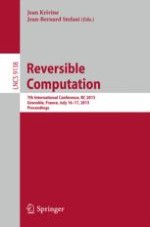2015 | Buch
Reversible Computation
7th International Conference, RC 2015, Grenoble, France, July 16-17, 2015, Proceedings
herausgegeben von: Jean Krivine, Jean-Bernard Stefani
Verlag: Springer International Publishing
Buchreihe : Lecture Notes in Computer Science
